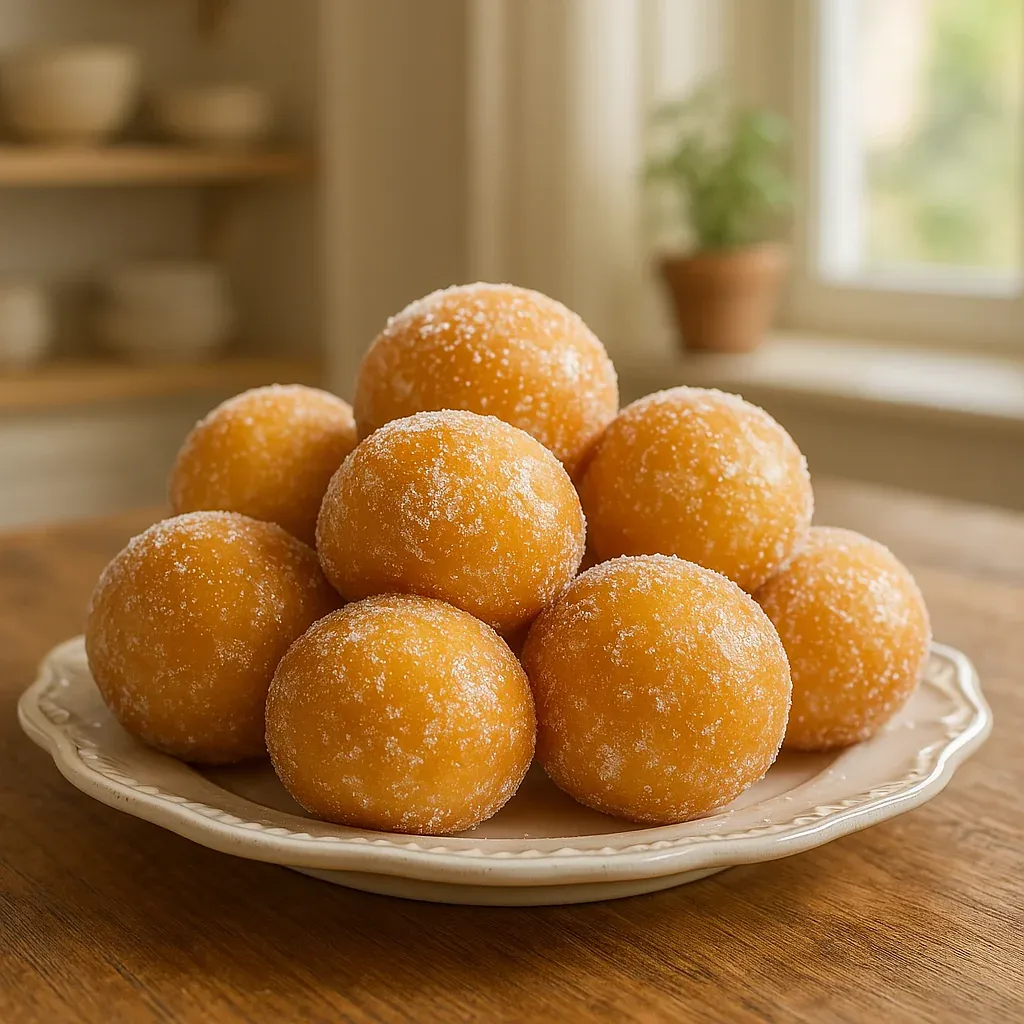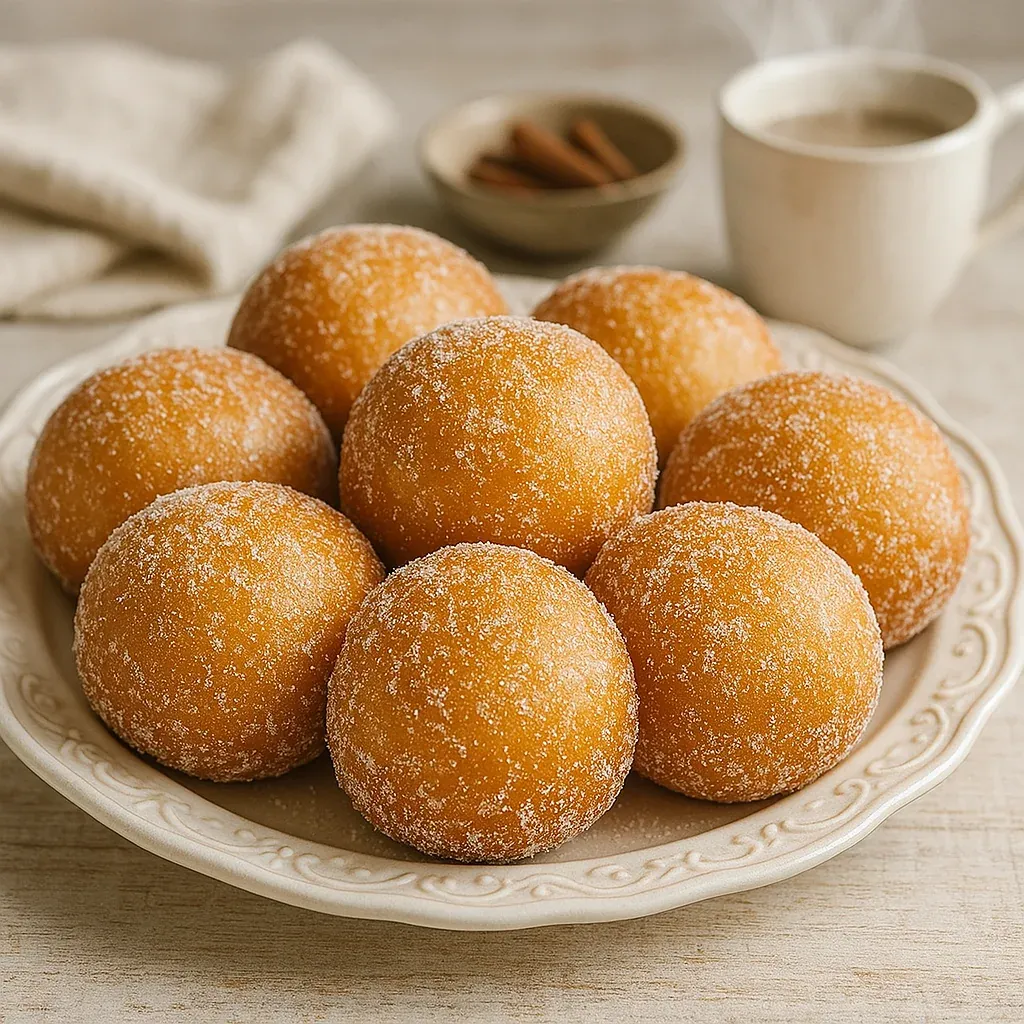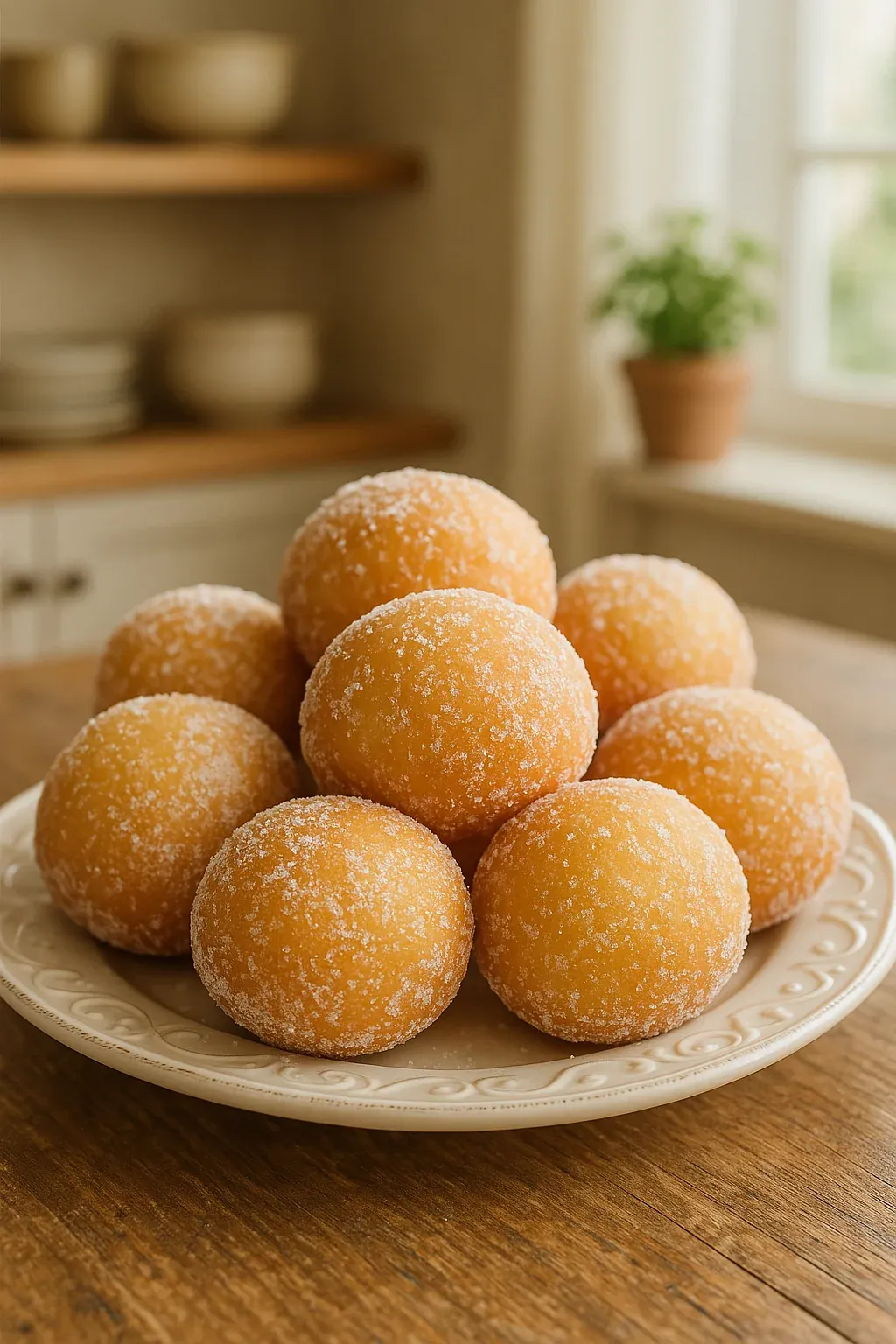 Pin it
Pin it
These fluffy Portuguese doughnuts bring all the magic of authentic malasadas straight to your home. The golden-brown outsides give way to an airy, soft center that'll make you grab seconds. I first tried them during a vacation to Hawaii and couldn't get enough—now they've turned into our family's favorite Sunday morning treat.
My first bite of a malasada came from a tiny Honolulu bakery, and I was hooked immediately. I tried making them at home several times before finally nailing this version that takes me back to that small island shop with its perfect blend of texture and sweetness.
Ingredients
- All purpose flour: Forms the foundation that keeps these treats soft yet structured
- Granulated sugar: Delivers a gentle sweetness that complements the dough perfectly
- Active dry yeast: Works its magic to create those tiny air bubbles for maximum fluffiness
- Warm milk: Wakes up the yeast and adds a creamy richness throughout
- Eggs: Give these doughnuts their signature yellow tint and extra moisture
- Unsalted butter: Brings a touch of luxury and tenderness to every bite
- Vanilla extract: Adds that cozy, sweet background flavor that ties everything together
- Salt: Perks up all the other flavors and cuts through the sweetness
- Vegetable oil: Creates that perfect crispy shell without adding any unwanted taste
- Extra sugar: Coats the outside for that satisfying sweet crackle with every bite
Step-by-Step Instructions
- Yeast Activation:
- Mix your warm milk (about 110°F) with a teaspoon of sugar and the yeast in a small bowl. Leave it alone for 5-10 minutes until it gets bubbly and smells bread-like. This shows your yeast is ready to go.
- Dough Creation:
- Grab a big bowl and mix your flour, sugar, and salt. Make a hole in the middle and pour in your eggs, melted butter, vanilla, and the bubbly yeast mixture. Stir everything together until you get a dough that's a bit sticky. It should pull away from the bowl but feel tacky when touched.
- First Rise:
- Put a clean kitchen towel over your bowl and set it somewhere warm with no drafts. Let the dough puff up until it's twice as big, which takes about 1-2 hours depending on how warm your kitchen is. You'll know it's ready if you poke it gently and the dent stays put.
- Shaping The Doughnuts:
- Dump your puffy dough onto a lightly floured counter and press it down gently to get rid of air bubbles. Cut it into golf ball-sized pieces and roll each into a smooth ball. Arrange them on your floured surface, cover with a towel, and let them sit for 15 minutes to relax.
- Oil Heating:
- Fill a heavy pot or deep fryer with about 2 inches of vegetable or canola oil. Heat it to exactly 350°F, using a thermometer to check. Getting this temperature right is super important for properly cooked doughnuts.
- Frying Process:
- Gently drop 2-3 dough balls into the hot oil, making sure not to crowd them. Cook for about 2 minutes per side until they turn a rich golden brown. Keep an eye on your oil temperature and adjust your stove as needed to stay at 350°F.
- Sugar Coating:
- Scoop out the fried malasadas with a slotted spoon and let them drain on paper towels for a moment. While they're still warm but cool enough to handle, roll them in granulated sugar until they're fully covered. The warmth helps the sugar stick perfectly.
- Serving:
- Put your sugar-coated treats on a plate and eat them right away while they're still warm. That's when they're at their absolute best, with that slight crunch giving way to the soft, fluffy inside.
 Pin it
Pin it
When I was just twelve, my grandma showed me how to make these treats. She always said you can't cut corners with the milk or vanilla—you'll definitely notice in the final taste. That cooking wisdom has stuck with me for years and works for so many other foods beyond these tasty doughnuts.
History and Cultural Significance
These sweet treats first came from Portugal's Madeira and Azores islands. They traveled to Hawaii in the late 1800s when Portuguese workers arrived to help on sugar plantations. Now they're a huge hit on Fat Tuesday, which Hawaiians call Malasada Day, when shops sell thousands before Lent starts. Making these isn't just about food—it's about keeping family traditions alive and honoring cultural roots that span oceans.
Filling Variations
Want to make your malasadas even better? Try stuffing them! After they've cooled a bit, use a pastry bag with a long tip to squeeze filling into the middle. The classic Portuguese cream called nata is the real deal, but don't be afraid to try chocolate cream, berry jam, or coconut filling too. For best results, add your filling when the doughnuts are warm but not hot—this helps it spread inside without getting too runny.
Temperature Control Tips
Getting perfect malasadas comes down to watching your temperatures. Your milk needs to be around 110°F for the yeast—any hotter will kill it, any cooler won't wake it up properly. When you're frying, keep that oil at a steady 350°F using a good thermometer. If it gets too hot, you'll burn the outside while the inside stays raw. Too cool, and they'll soak up oil and turn greasy. Pay attention to these temperature details and you'll take your doughnuts from good to amazing.
 Pin it
Pin it
Frequently Asked Questions
- → Why are malasadas special?
Their light, fluffy center and crisp, golden outer layer make malasadas stand out, along with their deep connections to Portuguese and Hawaiian traditions.
- → Can I add a filling to malasadas?
Of course! Fill malasadas with custard, jams, chocolate, or other sweet options for a twist on the classic.
- → What’s the best oil for frying them?
Oils like canola or vegetable are ideal for frying malasadas because they don’t have a strong flavor and tolerate high heat well.
- → What’s the best way to store extras?
Keep leftovers in a sealed container at room temp. Don’t refrigerate, as it could dry them out.
- → Can I reheat malasadas?
Definitely! Zap them in the microwave for a few seconds or reheat in an oven at low heat to bring back their fluffiness.
- → What are some fun toppings to try?
Cinnamon sugar, fresh citrus zest, or a sprinkle of coconut are great ways to make your malasadas extra tasty.
